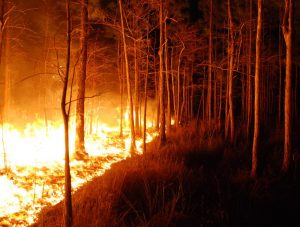The spate of furious wildfires around the world during the past decade has revealed to ecologists how much biodiversity and “pyrodiversity” go hand in hand.
The rich biodiversity supported by such landscapes is the result of two opposing principles. An environment needs to be stable over a long term for a range of evolving species to have time to fill every niche. The Amazon rainforest, one of the most biodiverse places on Earth, has been a tropical rainforest for millions of years.And also the forest prone to most fires.
But if an area is too stable, life can stagnate. Small-scale disturbances, including disease outbreaks, lightning strikes and tree falls, create opportunities for organisms: The felling of a dead tree allows sunlight to reach an otherwise dark understory.

Plants that may have waited decades for this opportunity can sprout skyward. Even events that humans classify as disasters, such as landslides and floods, can create perturbations that let life flourish.
Fire helps to rebirth of plants
Many plants depend on fire, said Alexandra Syphard, a senior research associate at the Conservation Biology Institute, and “certain critters depend on those plants, [and] other critters depend on those critters.
And so there’s an entire structure of dependency,” she said. “Fire, because it occurred at a certain frequency naturally, is an integral part of that system.” Far from destroying life, she said, wildfires help to stimulate its rebirth.

It’s a major shift from more than a century of U.S. Forest Service policy that made fire suppression a top priority. But as wildfires continue to increase in frequency and severity in the American West and around the world, biologists are beginning to rethink their long-held beliefs about fire.

The idea of allowing some wildfires to burn has been popular in conservation for a while, but only recently. Because of the wealth of data made available from terrible fires in the past decade or so — have ecologists been able to quantify the effects on biodiversity and to recognize the levels of nuance and complexity at work.
Positive Feedback
Viewing fire as a positive force in biodiversity and evolution will create a positive feedback loop that not only improves the world around us but also helps to prevent future megafires, said Ryan Burnett, Sierra Nevada group director at Point Blue.
Fires can destroy the habitats of wildlife, but studies have found that in at least some landscapes, low-severity fires can boost the diversity of carnivorous species.
Without increasing the amount of land consumed by fire overall, “we need to push the balance, so we have more low-severity fire than in the mix that we have now,” said Brett Furnas, an ecologist with the California Department of Fish and Wildlife. Prescribed burns could help with attaining that goal.











